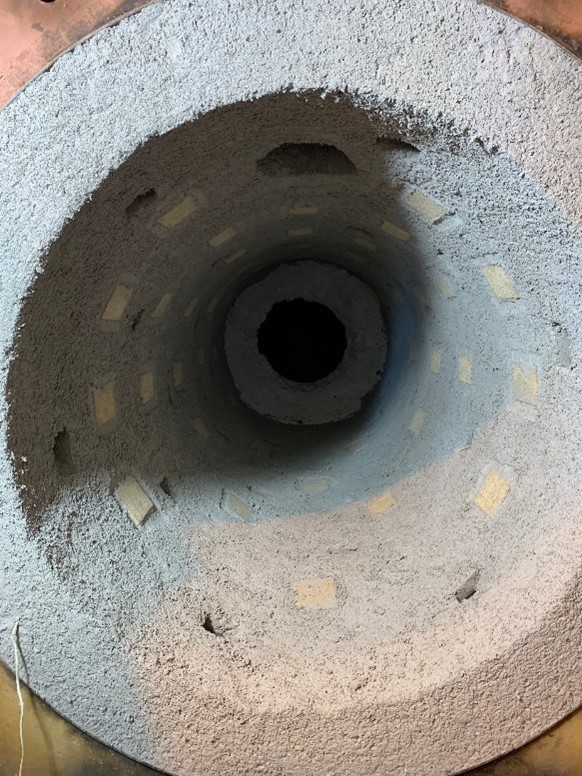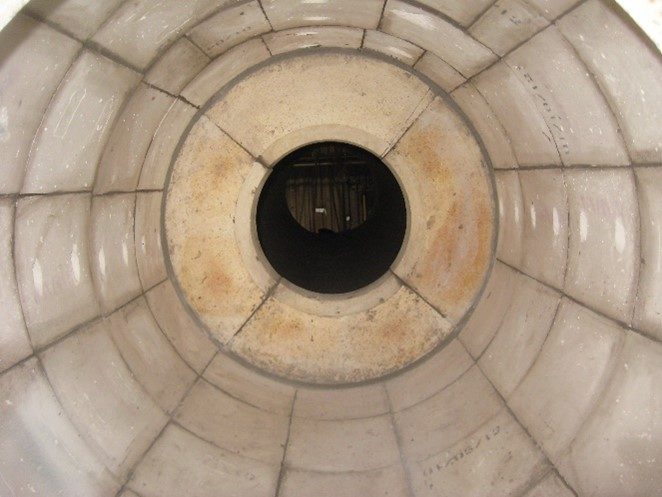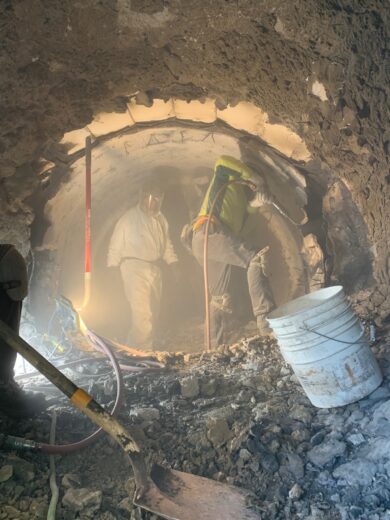What is Refractory?
In the most general sense, refractory is material that can withstand corrosive conditions at high temperatures while providing either thermal insulation or conduction. Refractory may need to withstand extreme heat and thermal shock, pressurized conditions, corrosion due to acidic or basic conditions, abrasion from rough conditions, along with many other factors once in situ. The specific requirements of refractories will vary based on the area of application and the conditions in which they will be used. As an example, hog fuel boilers have to contend with abrasion as fuel moves around inside the boiler as it burns; refractory is used as a protective measure against these abrasive conditions.
Where is Refractory Used?
Refractory is versatile in its uses and can be seen in small personal outdoor ovens, to heat shields on spacecraft, to lining boilers and furnaces. The use of refractory can increase the efficiency of the furnaces and boilers by limiting heat loss and protecting critical components.
What is Refractory made from?
Both natural and synthetic materials are used to manufacture refractory. The material specifications and component proportions can be adjusted to optimize the desired function of the refractory whether that be high heat retention, load bearing capability, insulating properties, or reduced spalling, among many, many others. Materials such as alumina, silica, chromite, dolomite, magnesite, plus others, are mined, refined, and combined in the desired proportions to meet situation needs.
Refractory Forms
Refractory comes in three common forms: molded, monolithic, and fiber. Below are descriptions and photos of each.

Molded refractory, which includes bricks, tiles, and special shapes, is available in standard sizes and compositions but can be customized in both aspects as needed. With proper application, molded refractory can be long-lasting, maintain structural integrity at operating temperatures, resist excessive cracking, and be cost-effective over the expected life of the product. When using molded refractory, mortar must be compatible with both the blocks and the conditions in which they are set to ensure the effectiveness of the installed materials.
 Fig 1: Refractory tile installed in Cleaver-Brookswood-fired end burner |  Fig 2: Refractory brick installed in quench section |

Monolithic refractory is initially unshaped but when installed hardens into a solid mass either through heat curing or dry setting. An activator or binding agent is necessary when using monolithic refractory. Castable, Gun Mixes, Ramming, and Plastic refractory all have individualized methods of application which continue to evolve in order to make installation more efficient. One of the main benefits of monolithic refractory is the flexibility of installation around irregular shapes such as tubes, in places with poor access, or in places that may have residual heat from equipment recently suspended from use.
 Fig 3: Shotcrete being installed |  Fig 4: Lightweight castable between tubes |

Fiberrefractorycan be formed as felts, blocks, and blankets. Raw refractory materials are melted and can then be blown with a high-powered stream of air perpendicular to the molten material to form filaments. Alternatively, the molten material can be let out in a steady stream onto quickly spinning disks. In both cases the melt is cooled rapidly while being extruded into fine fibers. The resulting fibers are then gathered into a mat and needled to form a cohesive mass. Fiber refractory often has applications in places where friction during operation is not a significant obstacle.
 Fig 5: Inswool installed on Cleaver-Brooks boiler door |  Fig 6: Inswool installed in exhaust stack |

Anchors A critical component of any refractory installation is the anchoring system. Floor, wall, and overhead installations have specific anchoring needs to ensure that refractory materials do not slump away from their settings. Anchor materials need to be assessed and selected to withstand the operating temperatures of their setting while taking into account the protection provided by the refractory materials installed around them.
 Fig 7: Wire anchors for wall application |  Fig 8: Wire anchors and clips ready for installation |
 Fig 9: Plastic refractory installed around wire anchors and clips |

Meeting Your Refractory Needs
C H Murphy || Clark Ullman has an experienced crew of refractory specialists to provide industrial refractory solutions in a variety of settings, from minor upgrades and repairs to complete turnkey refractory systems.
We offer high-tech design services for installations.
Our capabilities include heat flow calculations to minimize heat loss and heat storage calculations to determine start-up costs.
No matter your refractory needs, we are committed to providing
‘Solutions Under Pressure’.
Visit our website or call 800-234-6255.
The information above is not meant to be comprehensive and should not be used for diagnostic purposes or in place of a qualified assessment by trained personnel.
References
Alaa, Hussein. “Introduction to Refractories” University of Technology – Iraq
Bhatia, A., B. E. “Overview of Refractory Materials” PDH Center
https://www.engineeringenotes.com/engineering/refractories/refractories-properties-and-types-engineering/41897
Harbison-Walker Handbook of Refractory Practice, 2005 Edition




